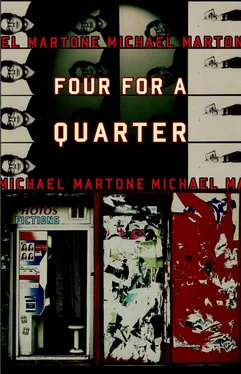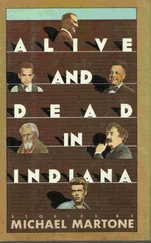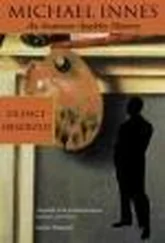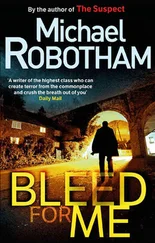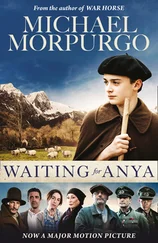Michael Martone - Four for a Quarter - Fictions
Здесь есть возможность читать онлайн «Michael Martone - Four for a Quarter - Fictions» весь текст электронной книги совершенно бесплатно (целиком полную версию без сокращений). В некоторых случаях можно слушать аудио, скачать через торрент в формате fb2 и присутствует краткое содержание. Год выпуска: 2011, Издательство: Fiction Collective 2, Жанр: Современная проза, на английском языке. Описание произведения, (предисловие) а так же отзывы посетителей доступны на портале библиотеки ЛибКат.
- Название:Four for a Quarter: Fictions
- Автор:
- Издательство:Fiction Collective 2
- Жанр:
- Год:2011
- ISBN:нет данных
- Рейтинг книги:3 / 5. Голосов: 1
-
Избранное:Добавить в избранное
- Отзывы:
-
Ваша оценка:
- 60
- 1
- 2
- 3
- 4
- 5
Four for a Quarter: Fictions: краткое содержание, описание и аннотация
Предлагаем к чтению аннотацию, описание, краткое содержание или предисловие (зависит от того, что написал сам автор книги «Four for a Quarter: Fictions»). Если вы не нашли необходимую информацию о книге — напишите в комментариях, мы постараемся отыскать её.
. In subject — four fifth Beatles, four tie knots, four retellings of the first Xerox, even the sex lives of the Fantastic Four — and in structure — the book is separated into four sections, with each section further divided into four chapterettes—
returns again and again to its originating number, making chaos comprehensible and mystery out of the most ordinary.
Four for a Quarter: Fictions — читать онлайн бесплатно полную книгу (весь текст) целиком
Ниже представлен текст книги, разбитый по страницам. Система сохранения места последней прочитанной страницы, позволяет с удобством читать онлайн бесплатно книгу «Four for a Quarter: Fictions», без необходимости каждый раз заново искать на чём Вы остановились. Поставьте закладку, и сможете в любой момент перейти на страницу, на которой закончили чтение.
Интервал:
Закладка:
KEYSTONE
Bob called. I had been out of town. I had just walked in. I was hungry after the trip. The phone rang. It was Bob.
“If anybody asks where you were Saturday night, you were with me,“ he said.
“Okay,“ I said. “Where were we?“
Bob thought for a second. “We were at the old Steak 'n Shake on Keystone.“
“What did I eat?“ I said.
“What? What did you have to eat?“
“At the Steak 'n Shake. If someone asks.“
Bob thought again.
“You had Chili 4-Way.“
“Okay.“
He hung up, and I went back out to find something to eat in earnest. The car was still warm. I drove over to the Steak 'n Shake on Emerson Avenue. I looked at the menu. There was Chili, there was Chili Mac, there was Chili 3-Way, and there was Chili 5-Way. I had remembered incorrectly.
NORMAL
We visited Normal to eat at the original Steak 'n Shake. The chain was founded in Normal in 1934, and the first restaurant was still standing after all these years. We liked to eat at the Steak 'n Shakes in Indianapolis, where we are from, that are all modern and new but retain, by design, what we believed was the look and feel of the original. We especially liked the trademarked logo of the disk with wings and the slogan that graced the actual restaurant china: “In Sight It Must Be Right.“ The company history online has pictures of the original Steak 'n Shake in Normal that looks even more retro than the retro restaurants they are building now. We could see how they were trying to retain, in the present, a suggestion of the past. Then, there were carhops, too, and marquee lighting with signs that swooped and curved into streamlined decorations on the roof. It was all very modern for its time and, now, in the pictures looked like the past's idea of the future. And here we were in that future looking back to a past that, for us, never was. Turns out that “In Sight It Must Be Right“ meant something specific back then. We could see, if we were customers then, the cooks grind the steaks into ground meat right before our eyes. The fine cuts of meat being turned into the ropey cables of meat as the cooks in immaculate white aprons turned the old-fashioned cranks of the machines. We guess, back then, people didn't trust what went into things like that, that eating out, then, was more of an adventure. So we wanted to see for ourselves, the past, go back in time, we thought, to see the real past in Normal instead of what was left of the past today in Indianapolis. Turns out we were too late. By the time we got there — driving through the farmlands of Indiana, Illinois, the fields dotted with cattle gazing on the green grass of the gently rolling pastures passing by — the original Steak 'n Shake had been demolished, or was in the process of being demolished, the yellow bulldozers still moving the ruins around into neat piles of rubble. We parked the car and watched them tidy up. We mixed into the crowd of onlookers watching. The setting sun, shining through the arch of water being sprayed on the debris to keep the dust in check, created a miniature diminished rainbow over what we had come looking for.
Four Signs
PLENTY
There is an economy of form found in nature. Look at the horn, a helix, the same pitch as Watson's DNA contemplated in Bloomington, Indiana. Is there a message here to be transmitted? Perhaps a flagpole. No, only a name. SCOTT'S. Now that jogs some ancient racial memory of thrift tacked onto all this abundance.
And, Watson, what genetics. What genie's been engineering the produce? The green fuselage of cucumber, the warhead carrots, the blimp tomato. Nothing in the world expresses these exact colors. Lemon yellow, orange orange. The pineapple, shaped like a stomach, turns into an eggplant when you look at it from the other side. The pair of pears, the green pepper and the red pepper. What is that? An onion? Garlic? Radish? A sprig of cherries, the same color red as the tomatoes and red peppers, and something unnameable out in front. It is the shape of a fruit, the dusty color of a vegetable. Which reminds me of the old saw about tomatoes — fruit or vegetable?
It is a stock boy's nightmare. His pyramids spilling from the grassy green counters of produce. His legs, a blur, a cartoon. The ripe fruit rolling, splitting open as it was meant to do. The seeds are dispersed everywhere. Vines, then, beginning to grow from behind the canned goods, a jungle there in aisle four.
It is like an explosion, with all the tricks of photography — time lapse, slow motion, cropped, retouched.
It is a vending machine that cannot stop vending. Lucy is our Eve, the housewife, with a bandana done up in horns. She reaches, plucks, eats endlessly.
It is that old television game show. Contestants sweep through the aisles, dumping food into cart after cart.
It is the terror in the eyes of the child posed next to the pumpkin bigger than he is.
Scott's big horn screws itself into the clouds. At night I can hear the worms in my garden. They cast long shadows with their casting, twine, untwine, leaving empty holes in the black earth the next morning.
PERFECTION
The loaf of bread is as big as a boxcar. Derailed from the sign, it scissors upward, its end sheared away and crumbled as if it were too much to ask to simply open it. Perhaps the whole loaf is to be used at once, and no one thinks to save the bag. The apparent carelessness of packaging, like the clear window of a written style, is transparent, ignorable. Not technique at all, but content. A one-pound loaf. You have held it in your hand. At this distance, it seems no bigger. Art has fooled you again as you reach out to squeeze it.
But it is yellow. As yellow as her hair. As yellow as the coat of butter (not waxy, not melted) spread evenly to the crust of the single slice she will always be eating. It is like the kiss Keats talks about on the ancient preserve jar. The red of her lips just meets the yellow of the butter. And the curve of her mouth Us into the parabolic arch of that slice. And her blue eyes are looking up away from the bread and butter as if, at any second, those blue eyes will roll all the way up beneath her creamy lids at the first instant she realizes just what it is she has tasted and finds it impossible to stop tasting and to stop saying Mmmm and impossible (all reflex now) to stop herself from closing her eyes as she will find it impossible to stop from closing her eyes when, later, she will kiss that boy at the picnic, their lips slick from the buttered bread they have eaten, the golden buzzing of bees in their ears, and the yellow light of the sun pressing on their closed lids.
But it is white bread. Where is the heel? You are in the middle of things. The slices keep falling, full face, the landing profile. The stack of bread on the plate never rises to shut off this stumbling. It is a steady state. It is another illusion you live by. It is the plenty that is never quite enough, like the bottomless cup of coffee. It is almost perfect. Each slice a slice closer to the whole truth. Each slice a slice closer to the end of this story and even beyond the end to the last blank pages, whiter without printing, at the end of the book. A book that was a story. A story that was like your life.
But wait, there is more.
POWER
My dad was a janitor all his life over at the GE. We lived on Brandruff Street by the Wabash tracks. From our backyard, where we kept a garden of trellised tomatoes, pole beans, and grape arbors, we could see the top floors of the factory beyond the rails and warehouses. I staked the plants. Strips of white cloth trained the stems up the poles and wires. GE's got factories everywhere, making all kinds of things electrical. The Broadway GE made the lightbulbs. My dad worked third trick. He changed lightbulbs with new lightbulbs off the line. Union rules, that old joke. Yes, it took three guys, two to turn the ladder while he held the bulb. On the roof was the GE sign. GENERAL ELECTRIC spelled out in thousands of bulbs. The old intertwined initials blazing in a circle of script above it. G and the E laced together. Each night, my dad woke up and, ready for work, sat with me in the garden. We listened to the plants grow. Fireflies sparked upward off the tips of the lush leaves. The trains shunted back and forth in the yard. With binoculars, he focused on the burning sign, floating above the roof. Later, I watched him, a blurred shadow, crawl across the light, making his way along the brilliant scaffolding, to the single extinguished bulb. I had to look away. Only the brightest stars were in the sky, the rest washed out by all the light of the city. My father kept his eyes closed as much as he could even behind the polarized window of the welder's mask he wore. He'd look away, he told me, to where he thought our dark house would be, where I would be in the vast darkness below.
Читать дальшеИнтервал:
Закладка:
Похожие книги на «Four for a Quarter: Fictions»
Представляем Вашему вниманию похожие книги на «Four for a Quarter: Fictions» списком для выбора. Мы отобрали схожую по названию и смыслу литературу в надежде предоставить читателям больше вариантов отыскать новые, интересные, ещё непрочитанные произведения.
Обсуждение, отзывы о книге «Four for a Quarter: Fictions» и просто собственные мнения читателей. Оставьте ваши комментарии, напишите, что Вы думаете о произведении, его смысле или главных героях. Укажите что конкретно понравилось, а что нет, и почему Вы так считаете.
